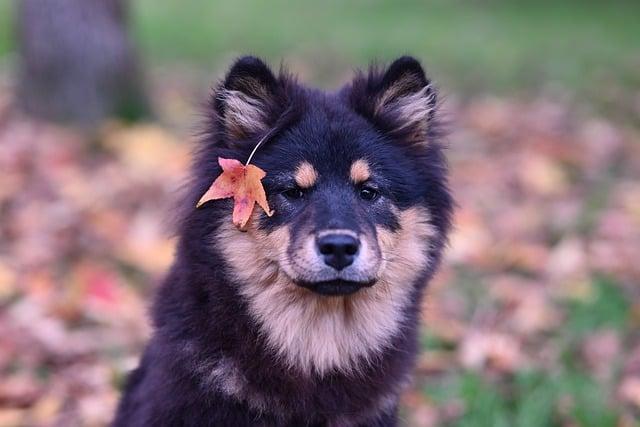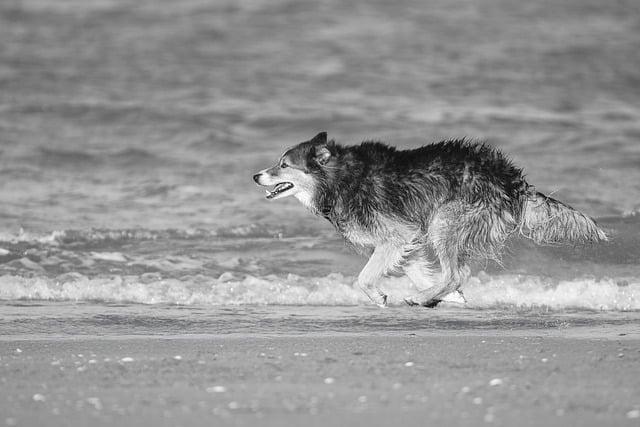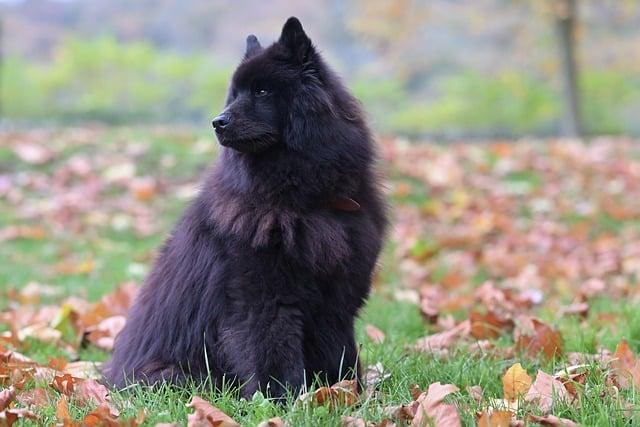In a quiet neighborhood, a woman named Sarah felt uneasy walking home alone at night. One evening, she adopted a spirited German Shepherd named Max. As they strolled together, Max’s keen senses picked up on every rustle and shadow. One night, a stranger approached, but Max stood firm, barking fiercely, protecting Sarah without hesitation. It was in that moment she realized: a loyal dog is not just a pet; it’s a guardian. Choose a breed that embodies protection and companionship, and experience the peace of mind that comes with a devoted protector by your side.
Contents
- Understanding the Protective Instincts of Dog Breeds
- Evaluating Temperament and Trainability for Effective Protection
- The Role of Socialization in Enhancing a Dogs Protective Abilities
- Choosing the Right Dog for Your Lifestyle and Security Needs
- Q&A
Understanding the Protective Instincts of Dog Breeds
When it comes to the protective instincts of various dog breeds, understanding their inherent traits can significantly influence your choice of a canine companion. Certain breeds are known for their natural guarding abilities, stemming from centuries of selective breeding for protection and loyalty. These dogs possess a unique combination of physical strength, intelligence, and an unwavering bond with their owners, making them ideal protectors.
Among the breeds renowned for their protective nature are:
- German Shepherds: Highly intelligent and versatile, they excel in various roles, including police and military work, thanks to their loyalty and courage.
- Rottweilers: Known for their strength and confidence, Rottweilers are fiercely loyal and protective of their families, making them excellent guardians.
- Doberman Pinschers: With their keen senses and alertness, Dobermans are not only loyal companions but also effective protectors, often used in security roles.
- Belgian Malinois: Similar to German Shepherds, these dogs are agile and intelligent, often employed in law enforcement due to their protective instincts.
Each breed exhibits distinct characteristics that enhance their protective instincts. For instance, the German Shepherd’s natural herding background contributes to its protective behavior, as they instinctively guard their territory and loved ones. Rottweilers, on the other hand, have a strong guarding instinct that makes them wary of strangers, ensuring their family remains safe. Understanding these traits allows potential dog owners to select a breed that aligns with their lifestyle and security needs.
Moreover, training plays a crucial role in honing a dog’s protective instincts. While some breeds may have a natural inclination to protect, proper socialization and obedience training are essential to ensure they respond appropriately to various situations. Engaging in training not only strengthens the bond between the dog and owner but also instills confidence in the dog, enabling it to act decisively when necessary. By investing time in training, owners can cultivate a loyal protector that is both a loving companion and a vigilant guardian.
Evaluating Temperament and Trainability for Effective Protection
When selecting a dog for protection, understanding the animal’s temperament is crucial. A dog that exhibits a balanced demeanor—characterized by confidence, calmness, and sociability—will be more effective in protective roles. **Temperament** directly influences how a dog reacts to various situations, including potential threats. A dog that is overly aggressive may pose risks to family and friends, while one that is too timid may not respond adequately in a crisis. Therefore, finding a breed known for its protective instincts, yet possessing a stable temperament, is essential.
Trainability is another vital factor in determining a dog’s suitability for protection. A dog that is eager to learn and responds well to commands will be more effective in executing protective behaviors. **Obedience training** lays the foundation for a dog to understand its role and the expectations placed upon it. Breeds that are intelligent and have a strong desire to please their owners often excel in training scenarios. This adaptability allows them to be taught specific commands that can be crucial in emergency situations, ensuring they can act swiftly and appropriately.
Moreover, the bond between the dog and its owner significantly impacts both temperament and trainability. A strong, trusting relationship fosters an environment where the dog feels secure and motivated to protect. **Positive reinforcement** techniques can enhance this bond, making training sessions enjoyable and effective. Dogs that feel a sense of loyalty and attachment to their owners are more likely to exhibit protective behaviors, as they perceive threats not just to themselves but also to their beloved human companions.
Lastly, it’s important to consider the individual dog’s personality within the breed standard. While certain breeds are renowned for their protective qualities, each dog is unique. **Behavioral assessments** can help identify specific traits that align with protection work. Engaging with a knowledgeable trainer or behaviorist can provide insights into a dog’s potential, ensuring that the chosen companion not only fits the physical requirements but also possesses the right mindset for protection. This careful evaluation process is key to finding a dog that will safeguard its owner effectively and reliably.
The Role of Socialization in Enhancing a Dogs Protective Abilities
Socialization plays a crucial role in shaping a dog’s behavior and enhancing its protective instincts. When dogs are exposed to a variety of environments, people, and other animals from a young age, they develop a more balanced temperament. This exposure helps them distinguish between normal situations and potential threats, allowing them to respond appropriately when their owner is in danger. A well-socialized dog is not only more confident but also more capable of assessing situations accurately.
Moreover, socialization fosters a strong bond between the dog and its owner. This bond is essential for effective communication, which is vital in protective scenarios. A dog that trusts its owner is more likely to act decisively when it senses a threat. By engaging in positive interactions and training sessions, owners can reinforce their dog’s loyalty and willingness to protect. This relationship is built on mutual respect and understanding, which are key components in a dog’s protective behavior.
Additionally, socialized dogs are less likely to exhibit fear-based aggression. When dogs are introduced to various stimuli in a controlled manner, they learn to remain calm and composed in unfamiliar situations. This training helps prevent overreactions that could compromise their protective abilities. Instead of becoming anxious or aggressive, a well-socialized dog can assess the situation and respond with the appropriate level of assertiveness, ensuring the safety of its owner without unnecessary escalation.
the benefits of socialization extend beyond just the individual dog. A well-socialized dog contributes to a safer community by promoting positive interactions with other pets and people. This not only enhances the dog’s protective capabilities but also encourages a harmonious environment where dogs can thrive. By investing time in socializing their dogs, owners are not only enhancing their pets’ protective instincts but also fostering a sense of security and well-being for themselves and those around them.
Choosing the Right Dog for Your Lifestyle and Security Needs
When selecting a dog that aligns with your lifestyle and security needs, it’s essential to consider various factors that contribute to both companionship and protection. Different breeds exhibit unique traits, and understanding these can help you make an informed decision. **Active individuals** may prefer breeds that require regular exercise and engagement, while those with a more sedentary lifestyle might opt for a dog that is content with less activity. Additionally, consider your living situation—whether you reside in an apartment or a house with a yard can significantly influence your choice.
Another critical aspect to evaluate is the dog’s temperament and protective instincts. Some breeds are naturally more alert and possess a strong guarding instinct, making them excellent choices for security. **Consider breeds such as:**
- German Shepherds
- Rottweilers
- Doberman Pinschers
- Belgian Malinois
These dogs not only provide protection but also form strong bonds with their owners, ensuring a loyal companion who is always on alert.
Training and socialization play pivotal roles in a dog’s ability to protect while remaining friendly and approachable. A well-trained dog can discern between a genuine threat and a harmless visitor, which is crucial for maintaining a safe yet welcoming environment. **Investing time in training** your dog from an early age will enhance their protective instincts while ensuring they are well-adjusted and sociable. Look for training programs that focus on obedience and protection skills to cultivate a balanced temperament.
Lastly, consider your family dynamics and the dog’s compatibility with children or other pets. Some breeds are more tolerant and gentle, making them suitable for families, while others may be more territorial. **Evaluate your household’s needs by asking:**
- How much time can I dedicate to training and exercise?
- Do I have young children or other pets that need to be considered?
- What level of protection do I require?
By answering these questions, you can find a dog that not only enhances your security but also fits seamlessly into your lifestyle, creating a harmonious home environment.
Q&A
-
Which dog breeds are known for their protective instincts?
Several dog breeds are renowned for their protective nature, including:
- German Shepherd
- Rottweiler
- Doberman Pinscher
- Belgian Malinois
- Boxer
These breeds are not only loyal but also possess the physical strength and intelligence necessary to protect their owners effectively.
-
How can I train my dog to be more protective?
Training your dog to be protective involves:
- Socialization: Expose your dog to various environments and people.
- Obedience Training: Ensure your dog responds reliably to commands.
- Protection Training: Consider professional training focused on protection skills.
With consistent training, your dog can learn to discern potential threats while remaining friendly with family and friends.
-
Are protective dogs safe around children?
Yes, many protective dog breeds can be safe around children if properly trained and socialized. It’s essential to:
- Supervise interactions between the dog and children.
- Teach children how to interact with the dog respectfully.
- Choose a breed known for its gentle temperament.
With the right approach, protective dogs can be both guardians and loving companions for your family.
-
What should I consider before getting a protective dog?
Before bringing a protective dog into your home, consider the following:
- Space: Ensure you have enough room for an active dog.
- Time: Be prepared to invest time in training and socialization.
- Experience: Assess your experience level with dog training and handling.
Choosing the right dog for your lifestyle will ensure a harmonious relationship and effective protection.
choosing the right dog for protection goes beyond breed; it involves understanding their instincts, training, and temperament. Invest in a loyal companion that not only safeguards you but also enriches your life with unwavering devotion.

大家好,我是彼得潘,專業的手法身體治療師。我喜歡探索和研究各種主題,並透過與人工智慧的合作分享專業、實用、有趣的文章。我們定期進行人工審核,以確保內容的準確性。如果您發現文章中有任何不準確的地方,請隨時與我們聯繫,我們會及時糾正。您可以透過 [email protected] 與我們聯繫。



